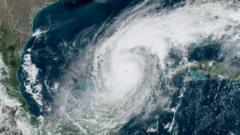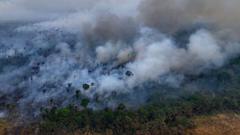A new study from the University of Oxford addresses how higher global temperatures and increased atmospheric thirst are intensifying droughts. Traditional irrigation systems are struggling to meet crop demands under these changing circumstances.
Droughts Intensifying: The Rising Thirst of Our Atmosphere

Droughts Intensifying: The Rising Thirst of Our Atmosphere
Recent research reveals that climate change is driving not just reduced rainfall but increasing atmospheric thirst, exacerbating drought conditions globally.
As scientists delve deeper into the effects of climate change on agriculture, one striking revelation has emerged: atmospheres across the world are becoming thirstier, leading to intensified and more frequent drought conditions. Research conducted by hydroclimatologist Solomon Gebrechorkos at the University of Oxford indicates that this phenomenon is contributing significantly to the severity of droughts, revealing a crucial oversight in traditional modeling which primarily focused on rainfall.
In looking out over the expansive fields dotted with center-pivot irrigation systems in regions like the Great Plains, it is becoming increasingly clear that older farming technologies are ill-equipped for today's escalating climate challenges. Meetpal Kukal, an agricultural hydrologist at the University of Idaho, emphasizes the mismatch between the water farmers are able to apply and the growing demands of crops. With outdated irrigation methods struggling to maintain adequate soil moisture, the agricultural landscape is at a critical crossroads.
Droughts traditionally occur due to imbalances in the water cycle—where rainfall is not enough to offset the water being evaporated by a thirsty atmosphere. Factors like temperature, wind, and humidity significantly influence this evaporation process, making it increasingly complex to manage. This complexity was largely overlooked, as previous studies often concentrated solely on precipitation levels, failing to account for atmospheric variables.
Dr. Gebrechorkos analogizes the situation to mismanaging a budget by only considering income without accounting for expenses, drawing attention to a flawed perspective that could endanger global food security. As the research highlights the importance of understanding atmospheric thirst, it calls for a reassessment of agricultural practices and technologies to safeguard crops in an era where heat and drought are becoming the new norm.



















